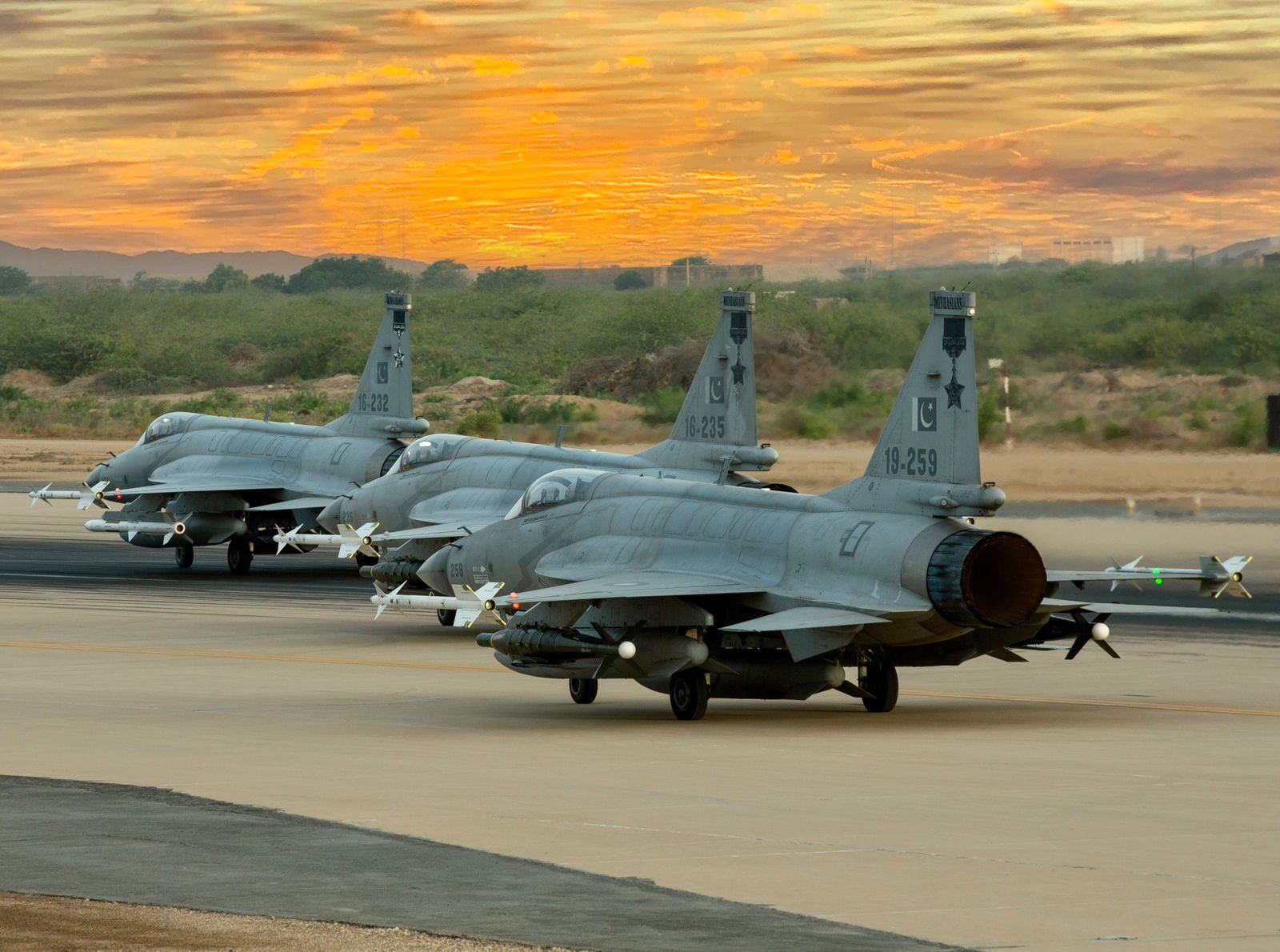Recently, the Chinese fighter jet Chengdu J-10 ‘Vigorous Dragon’ was in the news for carrying out an aggressive maneuver of firing flares near the Australian Military Helicopter MH-60.
Indian Ammunition Boosts Israeli Firepower Amid War With Hamas? Ex-Ambassador Responds To Reports
India’s neighbors – China and Pakistan, operate J-10. Pakistan inducted the aircraft in its combat fleet in response to India’s induction of French Rafale fighter jets.
Chinese commentators in 2019 have boasted, without independent confirmation, that J-10Cs had outperformed Thai JAS-39 Gripen jets in September 2019’s joint Falcon Strike exercise.
The Chengdu J-10C is a medium-weight, single-engine, multi-role combat aircraft developed by China. The J-10C features a delta wing and canard design with fly-by-wire flight controls.
It is equipped with an indigenous AESA (Active Electronically Scanned Array) fire-control radar. The aircraft is capable of all-weather operations. Its primary role is air-to-air combat, but it can also perform strike missions.
In 1988, Israel had agreed to develop a fighter in collaboration with China. The joint fighter was supposed to be based on IAI Lavi, a single-engine fourth-generation multi-role fighter jet developed by Israel Aerospace Industries (IAI).
The Russian scientists at Siberian Aeronautical Research Institute (SibNIA) in Novosibirsk, the brain behind the aerodynamic and structural testing of Sukhoi, believe that the J-10 is “more or less a version of the IAI Lavi.”

The J-10 incorporates elements from the Israeli light jet fighter prototype, including its underbelly intake, distinctive canards (small additional wings near the nose for added lift and maneuverability), and lack of horizontal tail stabilizers.
The J-10 departs from the Lavi’s design in terms of size and wings. In other words, J-10 is seen as a melting pot of foreign technology and acquired design methods.
The Russian designers who have worked with the Chinese on this program contend that “there are several other pieces of aircraft or technologies that are part of the configuration that they have acquired from different sources.”
The designers familiar with the process of J-10’s design insist that China not only acquired building blocks for the aircraft but also needed help to combine all the elements into a cohesive design.
The Chinese, however, have refuted the insinuations, claiming that the design elements claimed to be borrowed from IAI Lavi are from its own canceled project, J-9.
J-10 Fighter: How Borrowed Tech From Russia & Israel Revolutionized China’s Combat Aviation Sector
In 1981, the People’s Liberation Army Air Force (PLAAF) proposed the development of a third-generation fighter. The Chengdu Aircraft Design Institute (CADI) won the competition with its Saab 37 Viggen-like design. The J-10C was formally directed for development and manufacture in the mid-1980s. The engine selected to power J-10C was the Shenyang WS-10.
The first J-10 aircraft was delivered in 2003 and was declared operational the same year, 18 years after being in development.
The J-10C is an upgraded version of the J-10B. It features an indigenous AESA radar, imaging infrared seeker (IIR) PL-10, WS-10B engine, and PL-15 air-to-air missiles.
The J-10 C is often compared to upgraded variants of the American F-16 Fighting Falcon. Like the F-16, the J-10 boasts a highly agile, aerodynamically unstable airframe, which is stabilized by a computer in its fly-by-wire flight control system.
Its capabilities include beyond-visual-range engagement, precision air-to-ground strike, digital glass cockpit instruments, in-flight refueling, and electronic warfare.
The J-10 also had developmental hiccups as it suffered a series of crashes between 2014-2018 saw at least eight documented crashes, in one incident one of China’s first female fighter pilots was also killed.
The J-10C is in service with the People’s Liberation Army Air Force (PLAAF), Pakistan Air Force (PAF), and the People’s Liberation Army Naval Air Force (PLANAF).
Pakistan officially inducted the J-10C into its air force in 2022. It serves as a medium-weight fighter alongside the China-Pakistan jointly developed lightweight fighter jet, the JF-17. They are inducted into the Number 15 Squadron ‘Cobras’ of the PAF and are based at Minhas Air Base.

Upgrades In J-10
The J-10C model is considered at par with the 4.5 generation fighters. The biggest addition has been the AESA radar, the cornerstone of modern-day air warfare.
The J-10C has also improved its stealth by using non-reflective composite materials, reducing its visibility on radar. This decreased the range at which the J-10C could be detected and targeted.
The J-10C is armed with long-range PL-15 radar-guided air-to-air missiles, which outrange the US Air Force’s AIM-120 D. The J-10s can carry long-range anti-radiation missiles designed to target air defense radars for both at sea and land.
J-10 Exports
Pakistan was the first buyer of the J-10s, which were considered to be more advanced than the JF-17s. Pakistan deployed J-10 to escort JF-17C and Wing Loong II drones for a series of air and artillery strikes inside Iran in January 2024.
There were also reports that Saudi Arabia was mulling acquiring J-10C fighter jets. Egypt has also shown interest in acquiring Vigorous Dragons. In 2019. China Military Online carried an article expecting orders for one or two dozen each from Laos and Bangladesh. Bangladesh Air Force operates a dozen Chinese J-7 fighters, Russian MiG-29s, and Su-30 Flankers.
In 2018, a Bangladesh Air Force delegation was in China to inspect the J-10. The article on the Chinese website contended that Bangladesh needed J-10s to counter India’s Rafale. Interestingly, Bangladesh was also exploring Eurofighter Typhoons and was not keen on French Rafales, as neighboring India was already operating them.
- Ritu Sharma has been a journalist for over a decade, writing on defense, foreign affairs, and nuclear technology.
- The author can be reached at ritu.sharma (at) mail.com
- Follow EurAsian Times on Google News




